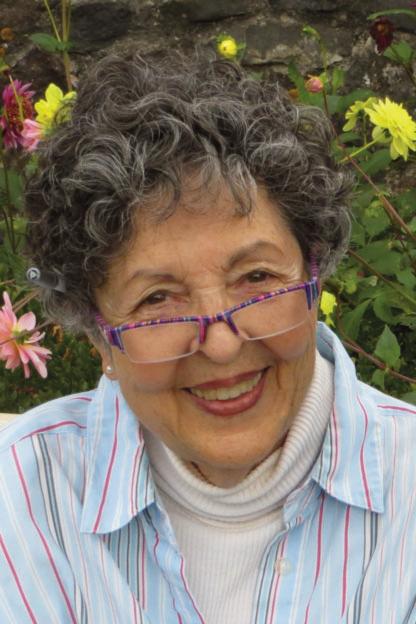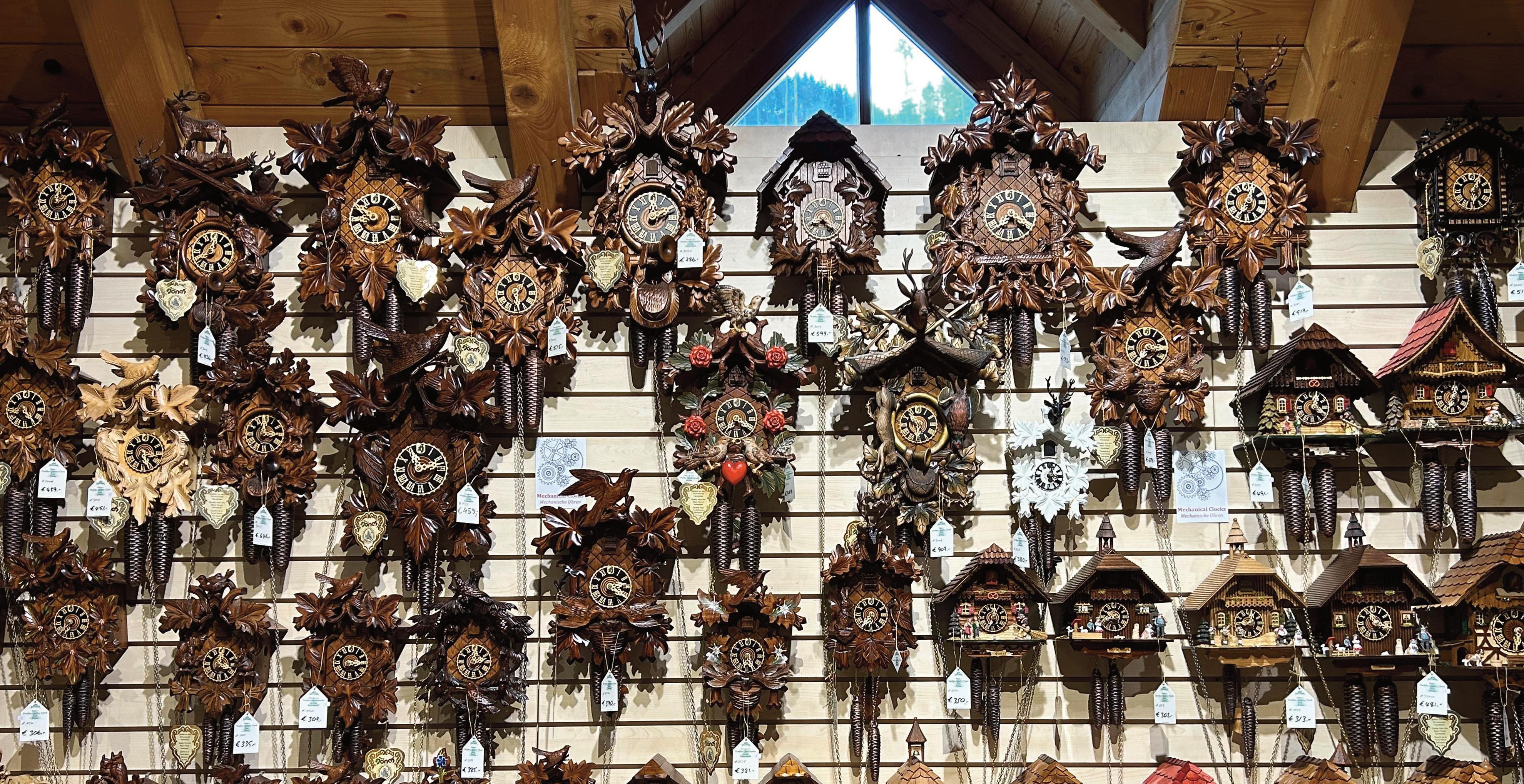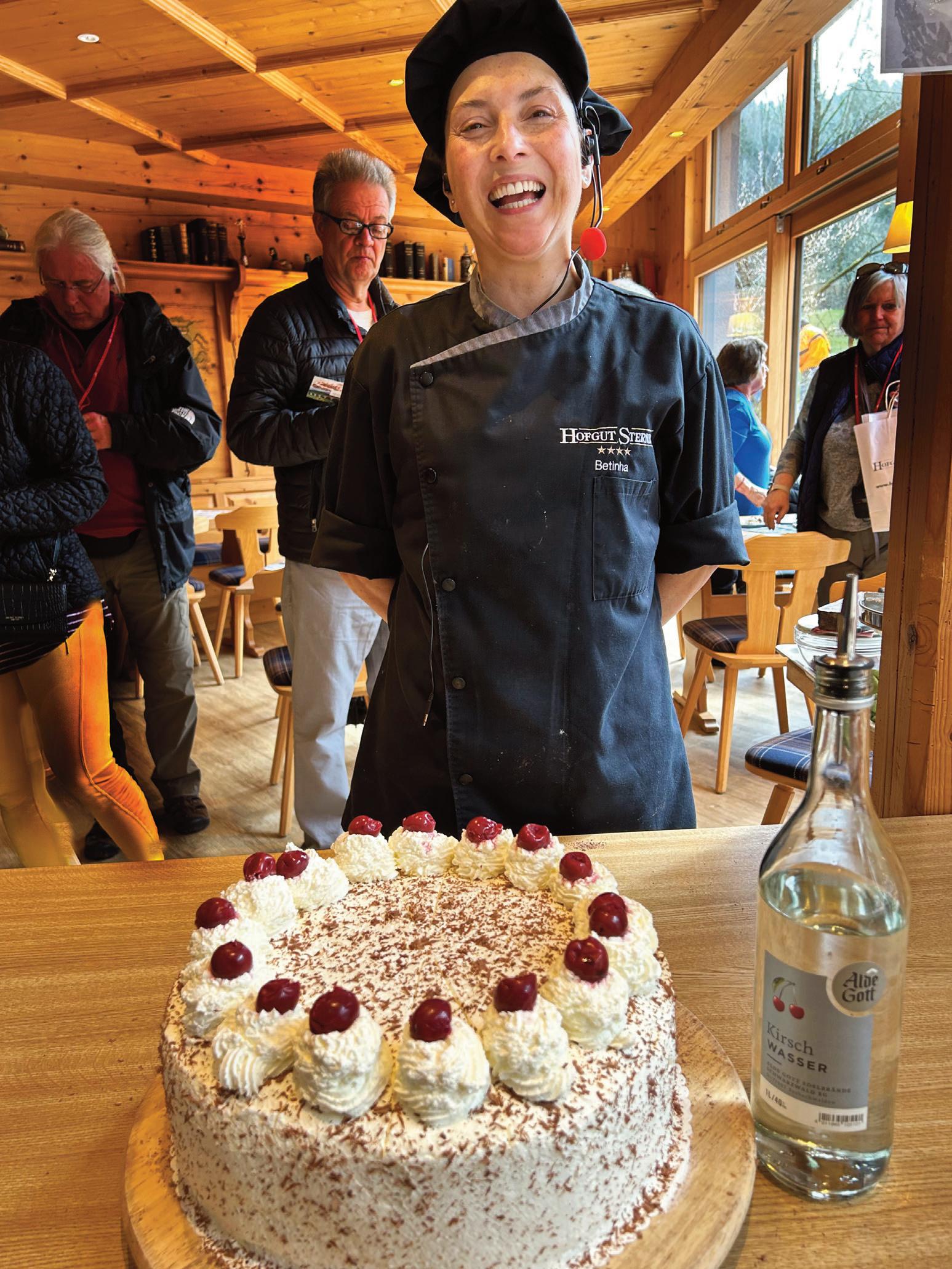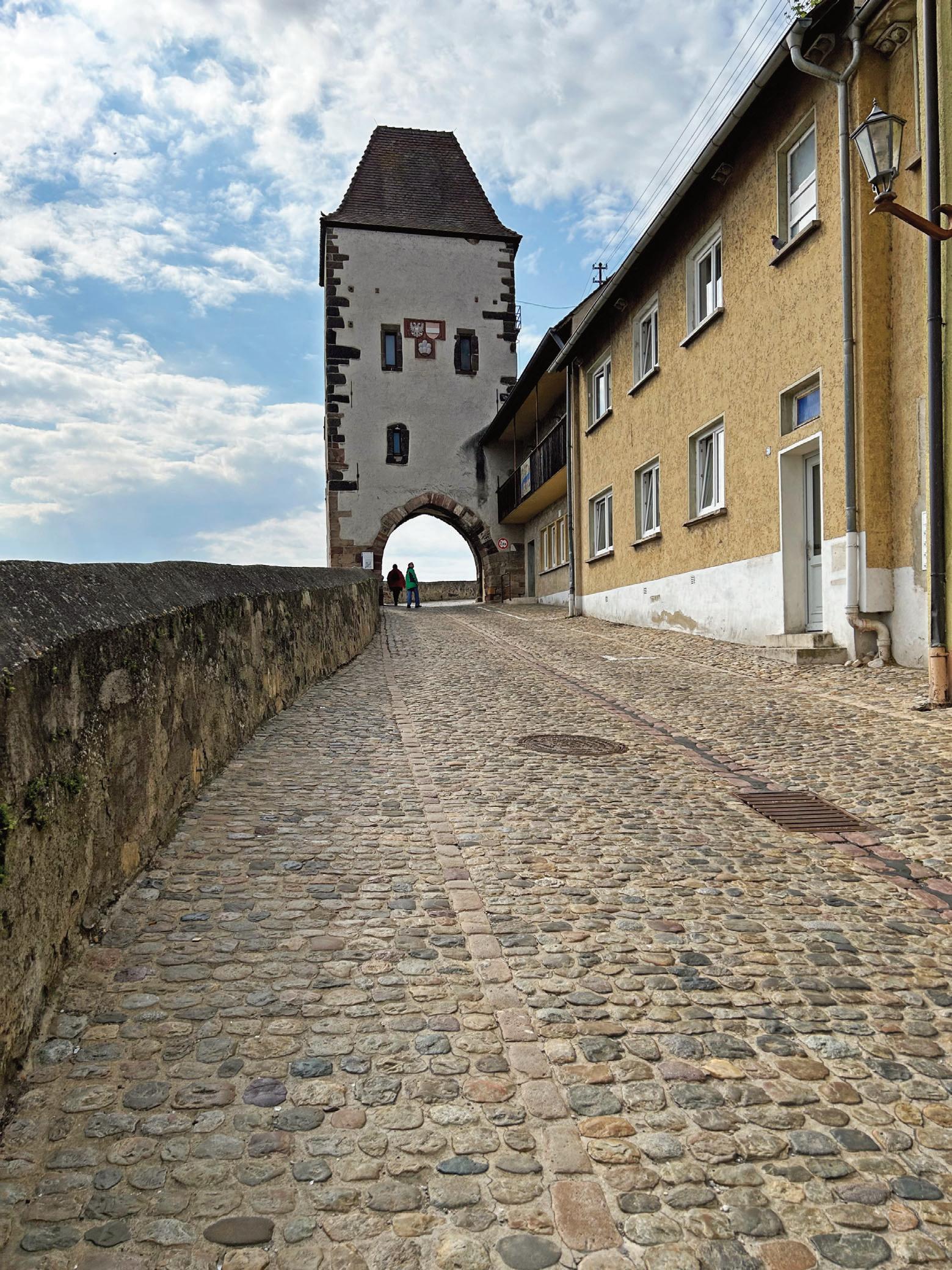
3 minute read
A jaunt to Europe & the Black Forest
By Elaine Warner
The Black Forest sounds like an ominous destination – echoes of fairy tales with witches in gingerbread houses and wolves waiting to prey on innocent children. The name was given to the area by Roman soldiers who found difficulty traveling through parts of the region heavily forested with dark evergreens.
We had arrived at the town of Breisach in the night. It is a popular entry way to the Black Forest, which covers more than 2000 square-miles. Our bus on our half-day tour passed through patches of towering dark trees and swaths of picture-book meadows with small houses with red-tiled roofs. At times we were surrounded by wisps of low-lying clouds.
Our ultimate destination was the Hofgut Sternen Black Forest Village. This collection of buildings includes a four-star hotel (Hofgut Sternen) plus a variety of shops and workshops with demonstrations.
One of the items most associated with the Black Forest is the cuckoo clock, whose origin stretches back into the 17th century. Producing these wooden clocks provided work and income for local farmers during harsh winter months. It wasn’t until the 1800s that the mechanism which produced the cuckoo’s call, a clever arrangement of whistles and bellows, became a standard feature.

A centerpiece of the compound is a giant cuckoo clock. Nearby a clock-making demonstration explained the many elements which go into the making of a cuckoo clock. I was particularly taken with the skill of the hand-carved ornamentation. If you buy a clock here, it comes with a cer- tificate of authenticity that states that 90 percent of all the parts in the clock are from the Black Forest.
In another area, we watched the finishing touches being added to a Schwarzwalder Kirschtorte – Black Forest Cherry Cake. This threelayered confection was made with dark chocolate sponge cake, cherry jam, sour cherries, Kirschwasser Schnaps, and loads of whipped cream topped with chocolate curls.

We sampled schnapps in a shop which carried items from all over Germany. Time ran out for us before we had a chance to watch a glass blowing demonstration and check out the wide selection of blown-glass pieces.
On the trip back to the ship we passed a number of fields covered with what looked like white sheets. We were told they were fields of white asparagus, a local specialty. We must have been there just before harvest – had it been available, I’m sure Chef Karl would have included it on the special regional section of the menu. I was sad, but my husband was not. I cheered up considerably when I found that one of the desserts that day was Schwarzwalder Kirschtorte.
Our family group broke up after lunch – Jack and Zoe, both with colds, decided on naps. Mark and I were intrigued by the large church which loomed over the town and set out to explore. The road rose steadily up the steep hill from the river and we soon encountered ancient walls and cobblestones.
Climbing on, our walk took us under a tall tower – Hagenbachturm. First mentioned in 1393, it went by several names before being named after a prominent official who was imprisoned there.
Even though we stopped several times on the way up, we were panting by the time we reached the top of the hill and St. Stephan’s Minster. The church, built between the 12th and 15th centuries blends both Romanesque and Gothic elements. Badly damaged in the Second World War, the structure was not completely restored until 1956.
For me, the most outstanding feature was a large, carved, wooden altar screen (1523/1526). In a side chapel, carved stone figures surrounded a dead Christ. There was no attribution or date that I could find. Though lacking the sophistication of Renaissance sculptures, they were nonetheless moving.
The trip back down the hill was much easier but not much faster. Uneven stone stairs and the cobblestones made slow going for safety’s sake smart.

Later afternoons on our Viking ship provided opportunities to visit in the Lounge and listen to live music. Also during the pre-dinner time, our program director Sharon would give a briefing on the next day’s stop. We left Breisach just before dinner.
In case you’re wondering, I can’t imagine anyone having problems with motion sickness – but my experience with river cruises is limited. We would occasionally feel and/or hear a bump when going through a lock, but otherwise the cruise was so smooth, the only way we could tell we were moving was by looking out the windows.
The Rhine here is the border between Germany and France – “Sprechen sie Deutsch?” on the east side and “Parlez-vous Francais?”on the west. Over the centuries, this region – Alsace – has shifted control numerous times so there’s a real blending of cultures. Our ship would be docking in Kehl, Germany, but we would be crossing the river by bus to our next destination. In my next column, we’ll visit Strasbourg, France.










